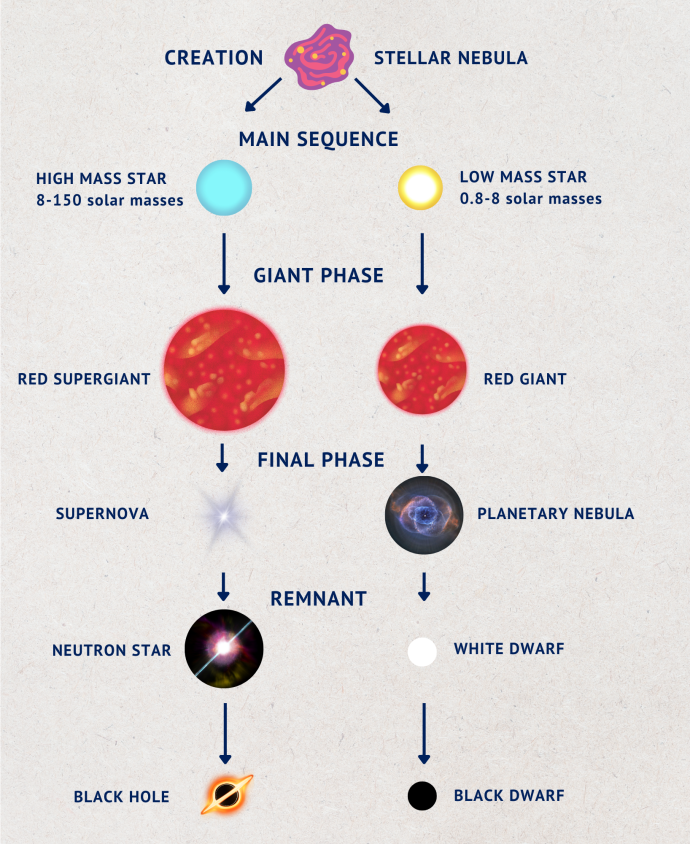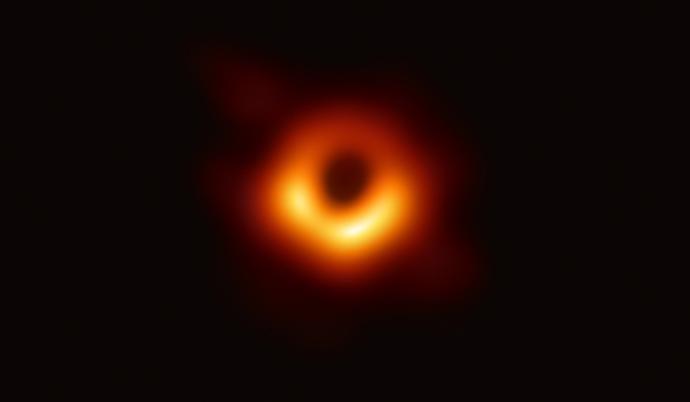Stellar Evolution
All stars form in nebulae, huge clouds of gas and dust.
Though they shine for thousands of years, stars do not last forever. The changes that occur in a star over time and the final stage of its life depends on a star's size.

Blackholes
Black holes are very strange objects. They are made during supernova explosions. These take place when very massive stars come to the end of their lives.

Classify a Star
Stars That Go Bang!
Supernovae are exploding stars which increase in brightness very suddenly and unexpectedly.
Stellar informant
Star clusters are large groups of stars. These clusters provide fantastic (in fact, out of this world(!)) laboratories for us to study populations of stars.
Pair the Stages of a Star
Though they shine for many thousands, and even millions of years, stars do not last for ever. They ignite, burn, and then run out of fuel and go out.
Can you match the images of each stage of a star's existence to the correct description?
Subrahmanyan Chandrasekhar
Early Life
Subrahmanyan Chandrasekhar (known as Chandra) grew up in Lorhre, British India (now Pakistan). Chandra came from an academic family. His uncle was a physicist and Nobel Laureate and his mother loved learning. She encouraged young Chandra to be curious. His mother and father taught him at home until he was 12. Chandra got a BSc in physics in 1930 from Presidency College, Madras. He then won a scholarship to study for a postgraduate degree at Trinity College, University of Cambridge, UK. He received a PhD in 1933.
Year born: 1910
Research Areas: Stellar Evolution, Black Holes
"My motive has not been to solve a single problem, but to acquire a perspective of an entire area"
Order the Stages of a Star
During their lives, stars undergo massive changes. What happens to them depends on how much mass they contain.
Can you put the stages that a low mass star and a high mass star will go through in the correct order on the diagram?
